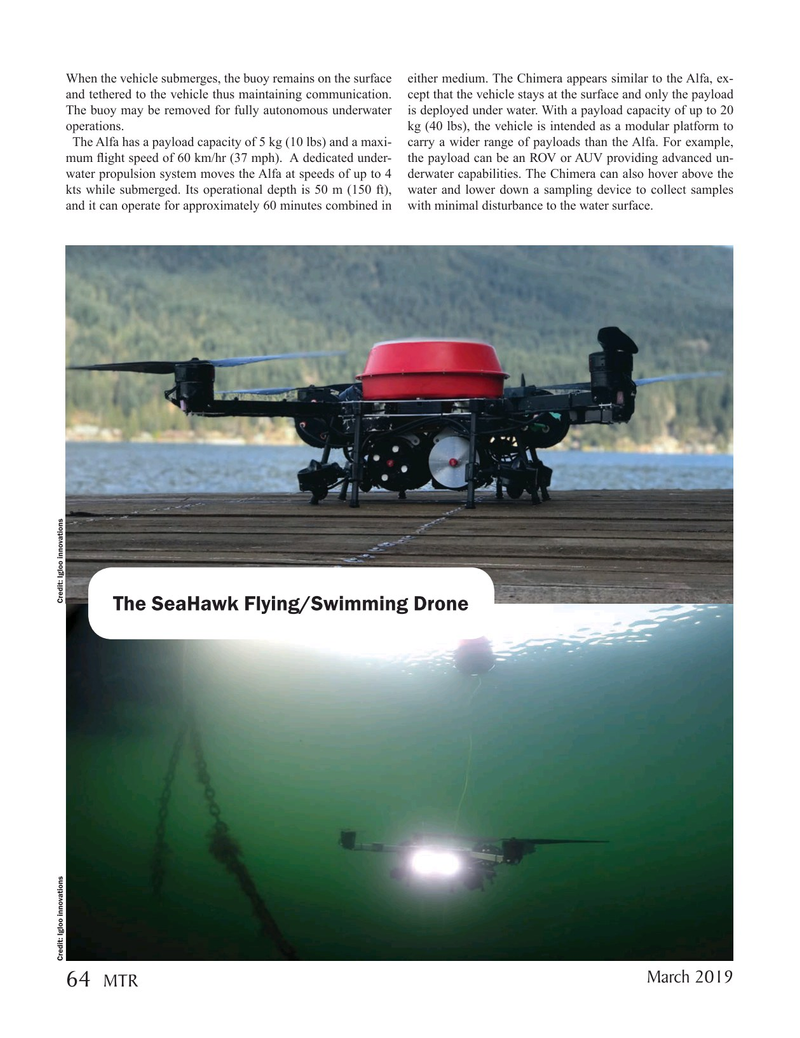
Page 64: of Marine Technology Magazine (March 2019)
Oceanographic Instrumentation: Measurement, Process & Analysis
Read this page in Pdf, Flash or Html5 edition of March 2019 Marine Technology Magazine
When the vehicle submerges, the buoy remains on the surface either medium. The Chimera appears similar to the Alfa, ex- and tethered to the vehicle thus maintaining communication. cept that the vehicle stays at the surface and only the payload
The buoy may be removed for fully autonomous underwater is deployed under water. With a payload capacity of up to 20 operations. kg (40 lbs), the vehicle is intended as a modular platform to
The Alfa has a payload capacity of 5 kg (10 lbs) and a maxi- carry a wider range of payloads than the Alfa. For example, mum ? ight speed of 60 km/hr (37 mph). A dedicated under- the payload can be an ROV or AUV providing advanced un- water propulsion system moves the Alfa at speeds of up to 4 derwater capabilities. The Chimera can also hover above the kts while submerged. Its operational depth is 50 m (150 ft), water and lower down a sampling device to collect samples and it can operate for approximately 60 minutes combined in with minimal disturbance to the water surface.
The SeaHawk Flying/Swimming Drone
Credit: Igloo innovations Credit: Igloo innovations
March 2019 64
MTR
MTR #2 (50-65).indd 64 3/11/2019 12:28:52 PM

 63
63

 65
65
